Whether you’re in the business of coffee makers, underwear, or salty snacks, your packaging matters—a lot.
Unfortunately, though, it’s not easy to get packaging right. With so many factors to consider, there are so many ways packaging can go wrong:
- Constantly shifting design trends mean that one day your sleek, neutral packaging could hit the mark, and a mere few months later feel totally stale.
- Evolving consumer preferences and expectations may call for a specific kind of sensory experience.
- Online trends like unboxing videos and “brand hauls” require brands to think outside-the-box (pun intended).
- New legislation on sustainable packaging practices has the potential to influence your creative flexibility, costs, and your entire supply chain.
The most successful brands bring all of these elements together in a packaging experience that delights current customers and wins over new ones.
As we move into a new year, make sure you’re ahead of the trends that will define packaging innovations over the next twelve months—starting with the five outlined below.
Jump to:
- More brands go beyond "recyclable"
- Eye-catching brand design
- Compostable packaging
- Toxin-free packaging
- Enhancing the packaging experience with technology
Test your packaging innovations with real consumers, at home
Tour the Highlight Platform
Get your questions answered and see the platform in action with a personalized demo.
More brands go beyond “recyclable”
The demand for recyclable packaging is not new, but the way brands, manufacturers, retailers, and importantly, governments, approach reducing their environmental impact is definitely evolving.
In 2023, major industry players made big changes. Walmart, for example, pledged to replace nearly all plastic mailers with paper mailers by the end of their fiscal year, which will equate to more than 2,000 tons of plastic. Likewise, Amazon increased its packages shipped without secondary packaging to 11 percent, and has publicized their plans to go much further in 2024.
While companies update their supply chains, public policy is also pushing all industries to go further in how they approach packaging. New Extended Producer Responsibility (EPR) legislation in states like Connecticut, New Jersey, Oregon, and California require brands to do more than think about their plastic usage. Manufacturers increasingly have to consider the impact of their packaging post-usage, and devise tactics like refill or reuse systems.
Gen Z are almost twice as likely as Boomers to switch brands or stop buying a product due to sustainability concerns.*
*According to a 2023 study of 1,976 Highlighters
Although legislative action like the above has the potential to increase costs for manufacturers, it also presents an opportunity. If both private industry and public investment can fund infrastructure like local recycling or refilling facilities, we can undertake the important work of making sustainable consumption accessible to and even easy for consumers everywhere.
While this trend towards EPR may already be years old hat in markets like the EU, brands in the US can get ahead of the curve by striving not just to meet, but exceed new legislative requirements.
Brands and manufacturers can refer to entrenched practices in European markets for inspiration.
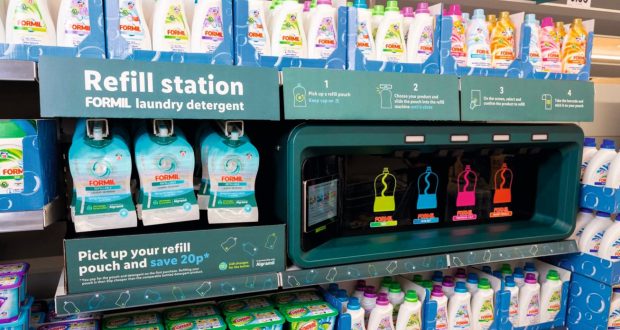
Example of refill station at a UK Lidl installed in 2023 (Image via packagingnews.co.uk)
While brands across industries innovate to comply with new legislation and meet consumer demand, some industries in particular would especially benefit from accelerating their recyclable packaging goals.
Highlight asked nearly 2,000 members of our product testing community, “If this product had sustainable packaging (plastic free, biodegradable), how would that affect the price you're willing to pay?”
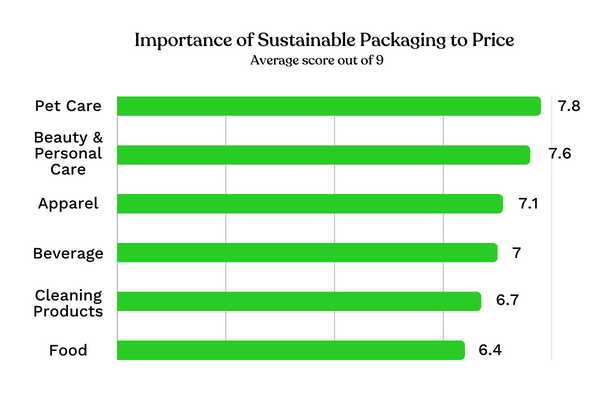
Pet care followed closely by beauty and personal care stood out as categories where consumers are especially mindful of sustainability in packaging.
For some categories, sustainable packaging can even signal high quality and efficacy: for pet care, cleaning products, beauty and personal care products, sustainable packaging was the top sustainability claim that signaled high quality and efficacy.
Which of these factors most makes you think this product
is highly effective or high quality?
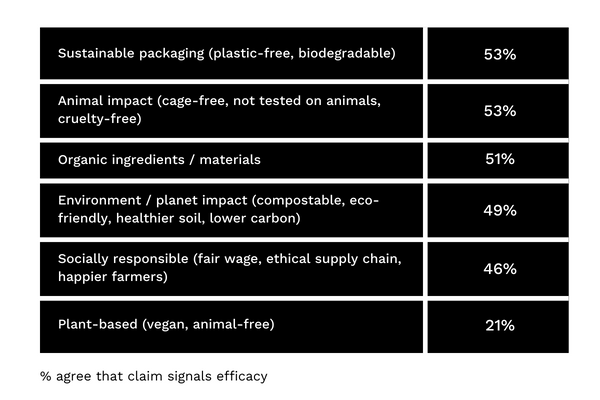
According to a 2023 study of 1,976 Highlighters
Are shoppers willing to pay more for "green" products?
See the data in Highlight's consumer preferences report.
Eye-catching brand design
While manufacturers have a slew of new legislation to comply with, that doesn’t mean they have to sacrifice brand.
While many brands have already taken pains to refresh their packaging for new generations of consumers who take their cues from the hyper visual world of influencers and their unboxing videos, there are still many brands successfully leveraging the more minimal, neutral designs and color palettes sought after by Millennials and older generations.
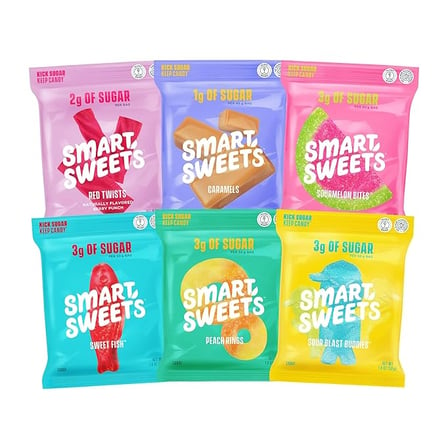
Smart Sweets debuted bright, eye-catching packaging and met growing consumer demand for healthy snackables. (Image via Amazon)
Ultimately, though, generational preferences and demographic data can only tell you so much. For example, while Millennials in Midwestern markets might prefer a more neutral look and feel, coastal Millennials might be more drawn to the colorful preferences we tend to associate with Gen Z or Gen Alpha.
“If there’s one thing I’ve learned after 13 years in market research, it’s that consumers will constantly surprise you," says Highlight VP of Customer Success Keshia Peris. "We can’t rely on assumptions and general trends to make crucial product design decisions—especially in fast-moving categories."
"Would you market the same product the same way to King Charles and Ozzy Osbourne simply because they’re both high net worth Boomers from the same geographic area? Nuanced and actionable insight comes from getting to know your target consumer on a human-level (i.e. their persona) and making connections between their motivators and the core elements of your product that they can touch, feel, smell, and physically interact with.”
The only way to move a design decision forward with confidence is to send prototypes to the home and test preferences with your target market before launching a new packaging look and feel.
Discover what delights consumers—and what doesn't
Tour the Highlight Platform
Get your questions answered and see the platform in action with a personalized demo.
Compostable packaging
Innovation in recyclable packaging certainly includes compostable packaging, but consumer education and wider social changes have gone a long way to make composting a popular and accessible option for manufacturers and consumers alike.
Take, for example, the growth of popular Reddit communities like r/zerowaste or even the more niche r/composting. The growth of these and similar communities demonstrates just how many consumers are proactively seeking out ways to reduce their environmental impact and consume responsibly.

The growth of the r/zerowaste community over the last five years (Image via subredditstats.com)
Both private and public entities are meeting consumers where they are, with the proliferation of private companies like CompostNow which operates across the southeast and midwest. 2023 also saw newly established city composting programs in places like Austin, New York, D.C., Baltimore and more thanks at least in part to funding from new injections of federal and state funding.
17% of Gen Z reports paying more for products that are sustainable, compared to 11.4% of Boomers.*
*According to a 2023 study of 1,976 Highlighters
As composting becomes more “everyday” for more Americans, compostable packaging is already expanding beyond food packaging. Durable goods, wearables, and more are already adapting plant-based mailers and internal packaging, and we’re bound to see even more in 2024.

Disruptor brand Cabinet has expanded from DTC to Target shelves with their innovative concept and packaging: your prescription mailed in a home-compostable mailer with a personalized and refillable glass bottle. (Image via Dieline)
Highlight account executive Emma Steele has worked with hundreds of emerging CPG brands, including Cabinet (pictured above). She is “proud to support our brand partners in their pursuit of creating more sustainable products,” and added that now is the time for brands to act on the sustainability front if they want to remain competitive.
“The focus of our customers and their competitors on these initiatives demonstrates the timeliness for brands to empower consumers to make more conscious and sustainable buying decisions,” Emma explains. “Take for example the success of a DTC [direct-to-consumer] brand like Cabinet: They’ve since won distribution in nationwide retailers like Target and CVS.”
Toxin-free packaging
After headlines everywhere began reporting the presence of microplastics in the human body, consumers responded with concern. Are we purchasing and using goods on a daily basis that are actively harming us?
PFAS in particular, or man-made chemicals that have been used in industry and consumer products worldwide for nearly a century, began to spark concern with consumers in 2023, and governments around the world responded.
Colorado, Hawaii, Maryland, Minnesota, Rhode Island, and Washington are among the states that have already passed or are in the process of passing legislation to prohibit PFAS in food packaging and other consumer goods. Federal legislation from the EPA is also sweeping and will present a challenge and additional cost for many US manufacturers and distributors.
As Highlight VP of Customer Success Keshia Peris explains, “In our work for brands and retailers like Nestle, CVS Health, and Nova Naturals, we’ve definitely seen a steady shift toward organic, toxic-free product formulas and packaging. Today more brands than ever are adjusting their offerings to give consumers the healthier choices they’re after, and recognize that success requires purpose, transparency and backing up commitments with real change.”
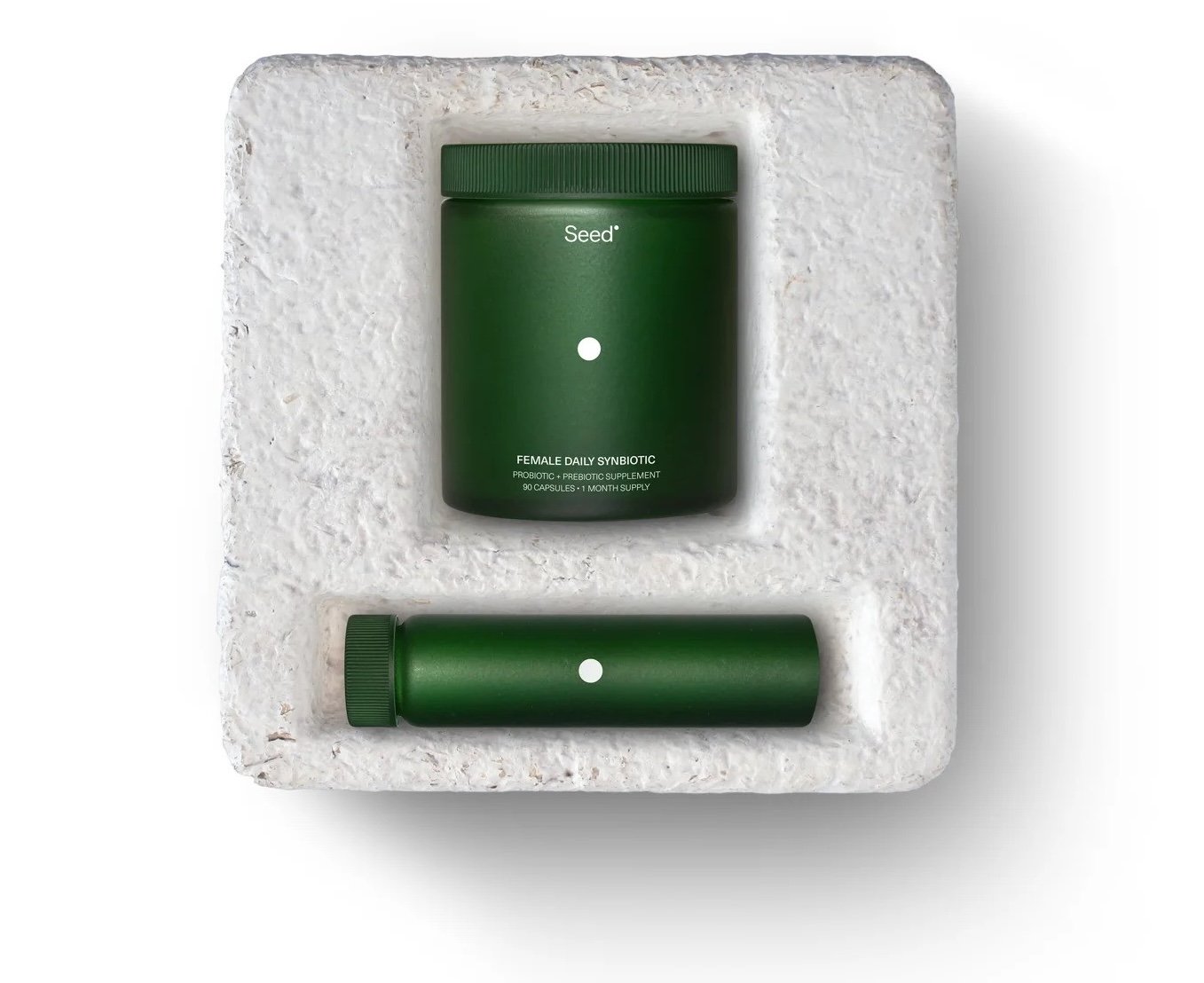
Seed, a daily “synbiotic” (pre + probiotic) is not just good for your gut, it’s good for the planet with its glass jar and compostable mycelium tray. (Image via Dieline)
Enhancing the packaging experience with technology
2023 was the year of renewed excitement around digital inkjet printing capabilities. While the technology itself has been used for decades already on less “sexy” aspects of packaging like labels, brands and manufacturers are beginning to explore the possibilities of an enhanced, personalized, or otherwise novel packaging experience with the use of this technology.
Not only does digital inkjet enable finer, more detailed graphics than previous technologies, but it enables a wider range of sensory experiences for consumers, too. In an interview with Packaging Dive, for example, Melianthe Leeman, global marketing director for wine and spirits at O-I Glass describes how they innovated a new graffiti decoration on bottles from their Monnalisa product line to achieve a tactile effect.
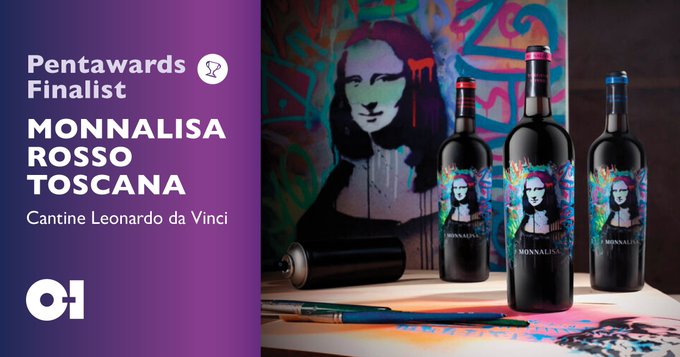
BevAl brands, sensory packaging is for you, too. Monnalisa’s textured bottle, for example, has won more than consumer loyalty (Image via O-I Glass)
Digital inkjet printing also enables more agility and flexibility for brands. Because it’s much less cumbersome than older technologies, manufacturers can produce smaller quantities faster and at a lower cost, meaning brands are empowered to experiment or modify packaging for seasonality or short campaigns in ways they haven’t been able to in the past.
That, in turn, opens the door for all the possibilities of digital virality. While unboxing videos or “brand haul” videos aren’t a new phenomenon, they certainly haven’t lost any popularity on social media platforms like Youtube, Instagram, and TikTok. With costs lower and timelines faster than ever before, there’s no reason not to invest in packaging that will inspire great user-generated content.
A lookback at 2023 and trendspotting into the coming year ahead is important to generate new growth opportunities for your business in 2024, but understanding where to start or what makes the most sense for your brand can be hard.
Schedule your demo today to learn how quick and easy it can be to break down packaging innovation trends into purposeful actions by testing innovation ideas and product prototypes through the Highlight platform.
Prepare for launch (or relaunch) with in-home usage testing
Tour the Highlight Platform
Get your questions answered and see the platform in action with a personalized demo.





.png?width=174&height=174&name=LinkedIn%20-%20Watermelon%20%26%20Tangerine%20(1).png)